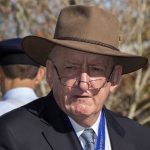World Sight Day: Eliminating treatable blindness around the world
It’s easy to dwell on the challenges that we face in eliminating preventable and treatable blindness around the world.
We know that more than 285 million people are blind or vision impaired and some of our closest neighbours in the Asia Pacific region are among those living with needless blindness every day. We have all seen the pictures which show that blindness and poverty are closely related.
But on World Sight Day, when we turn our attention to eye health and how blindness can be prevented, it’s also worth noting the positive impact that Australian foreign aid and expertise is having in restoring sight and enhancing the capacity of many developing countries to help them look after their own health needs in years to come.
In 2007, the Australian Government announced a $45 million Avoidable Blindness Initiative to tackle blindness and vision impairment in the Asia Pacific. On the back of this, nine Australian eye health NGOs formed a partnership called the Global Consortium, and together with AusAID committed to the elimination of avoidable blindness.
The partnership is set to restore or improve the vision of millions of people in the region over the next decade. Implementing 14 programs across seven countries, the Global Consortium is focusing on the key tasks of training health staff, developing much-needed infrastructure including eye clinics, hospitals and vision centres, and directly treating diseases like cataract surgeries and other sight-restoring interventions.
The Consortium is already on its way to achieving its ambitious goals. In
Clearly, the challenge at hand remains large. But the Global Consortium and the Australian Government are showing that, when political will, technical know-how and passion come together, many lives can be transformed.
Jennifer Gersbeck is CEO of Vision 2020













